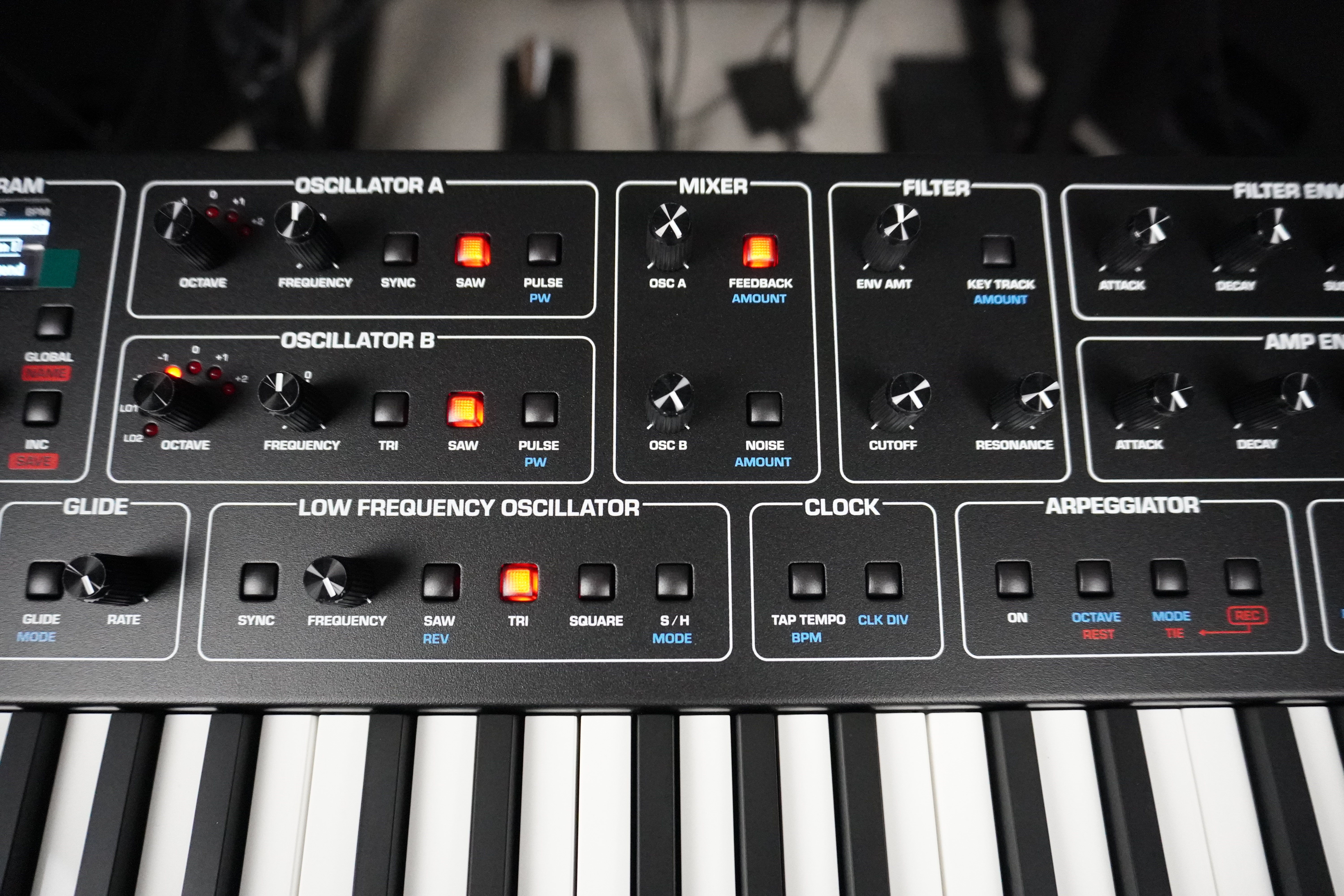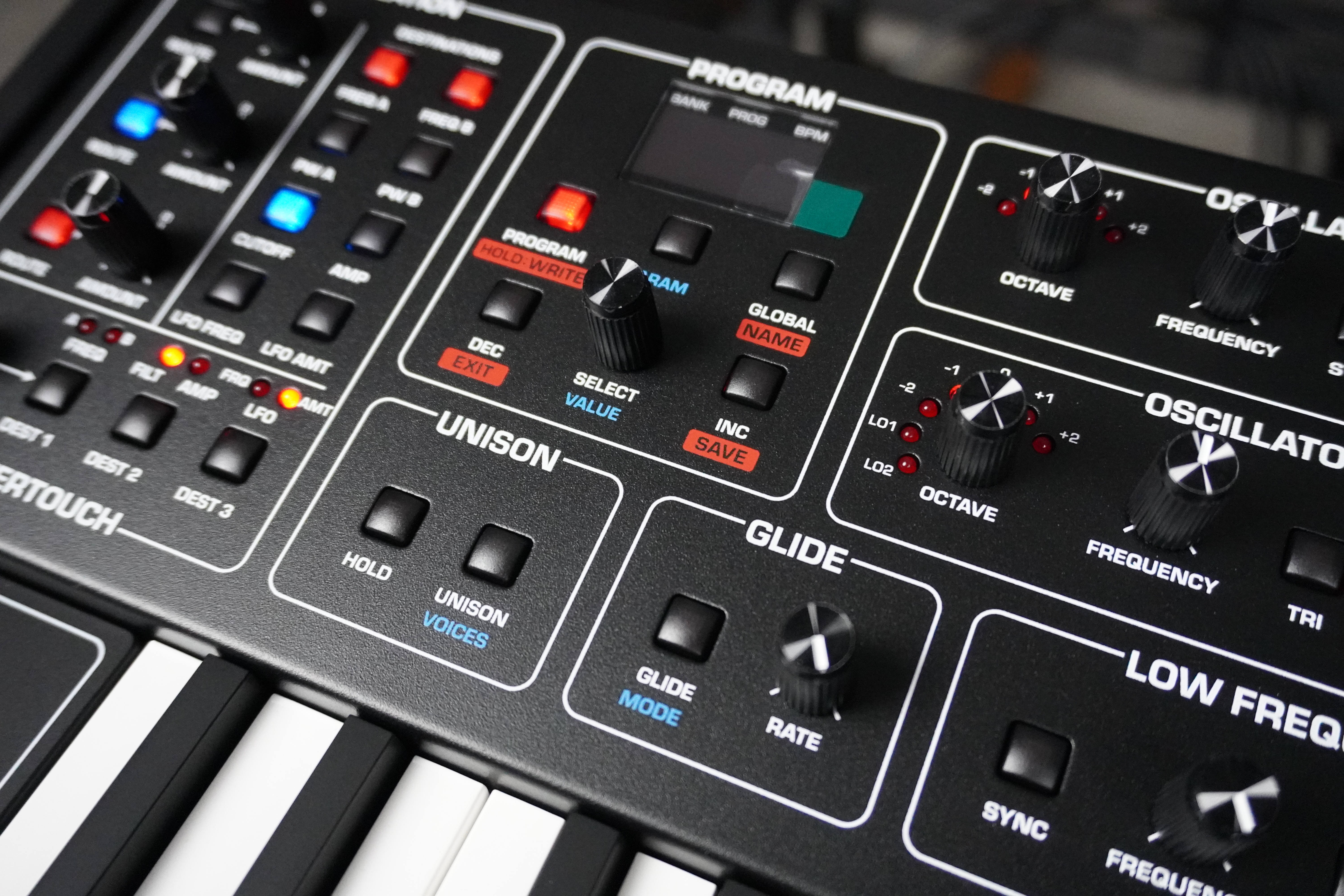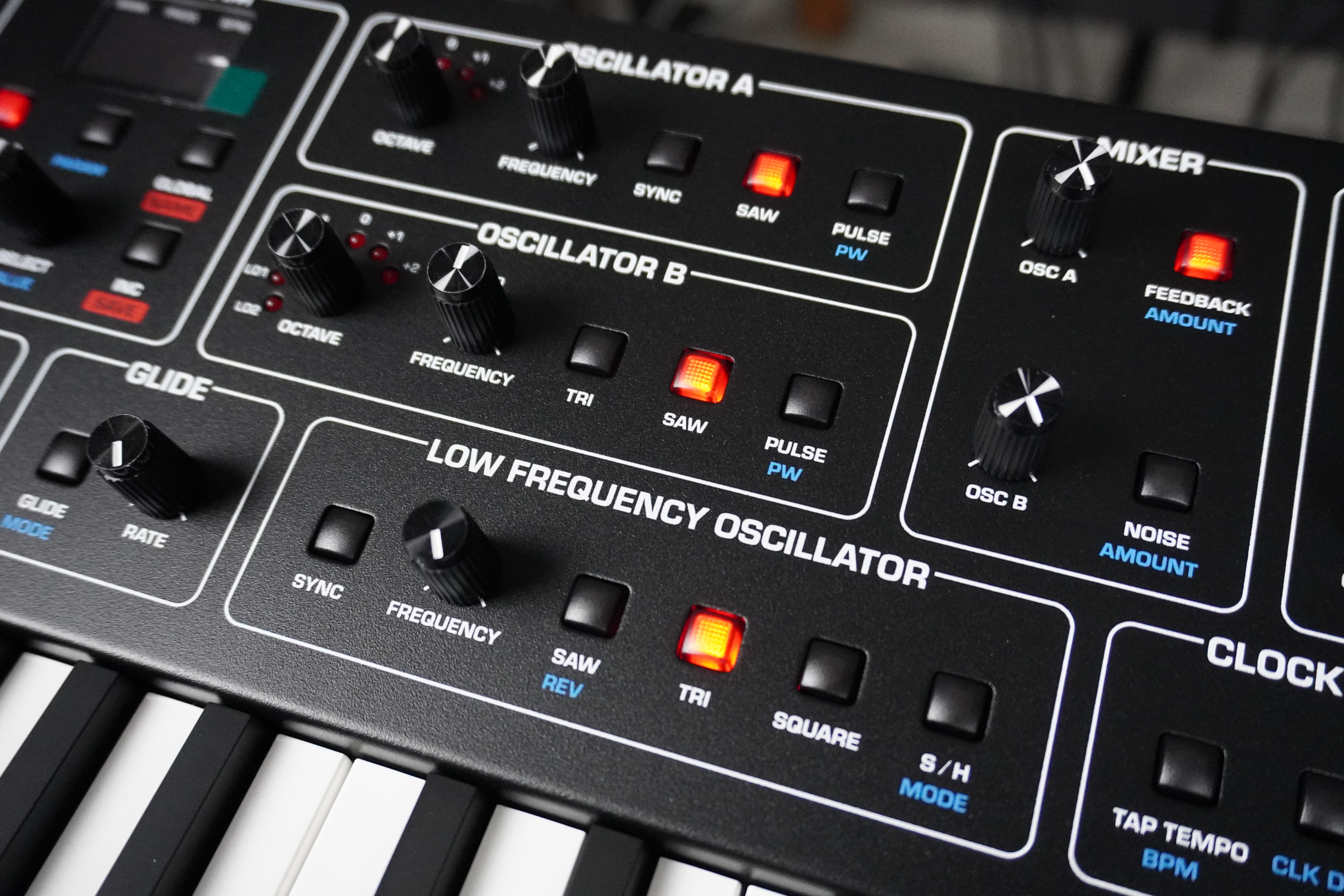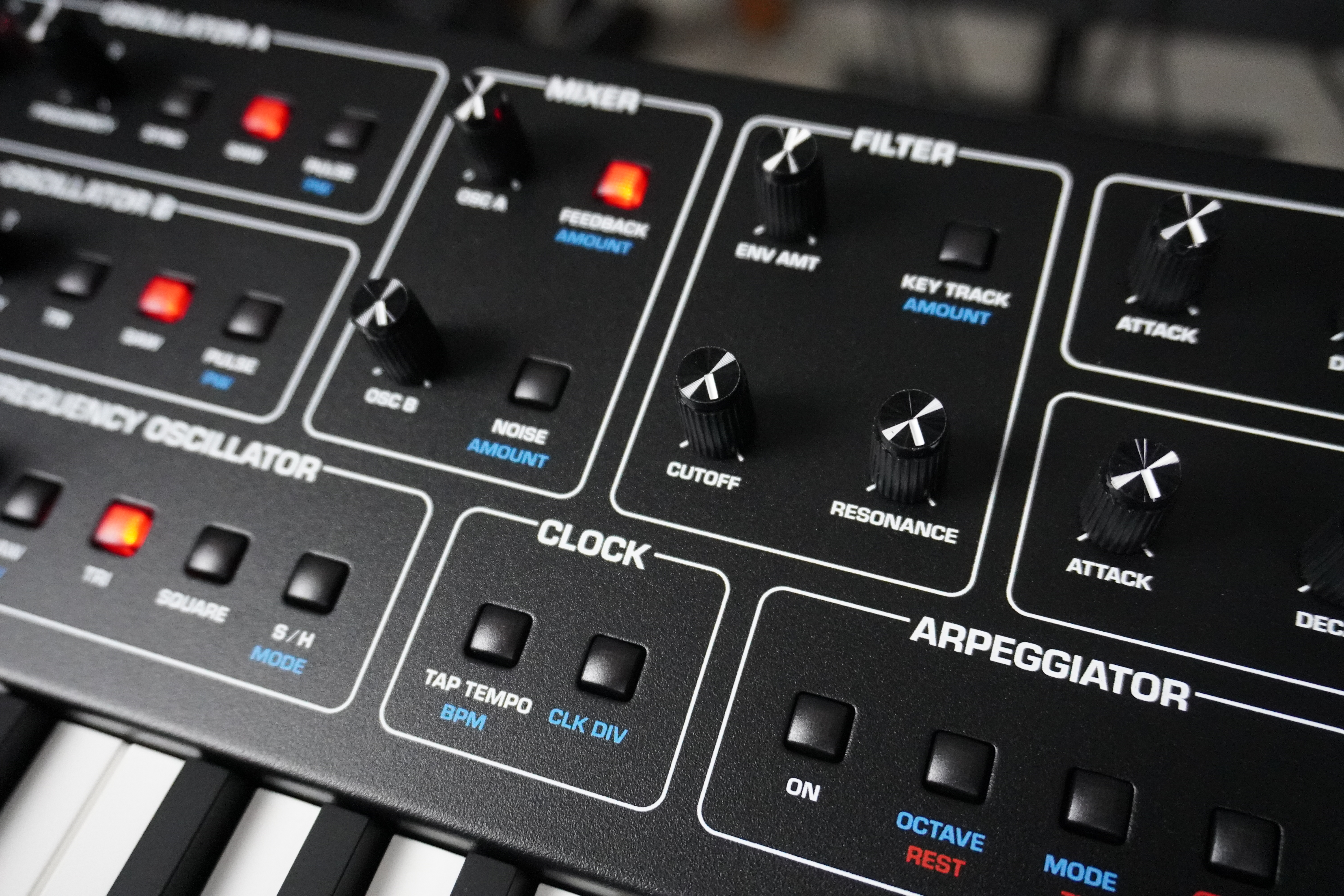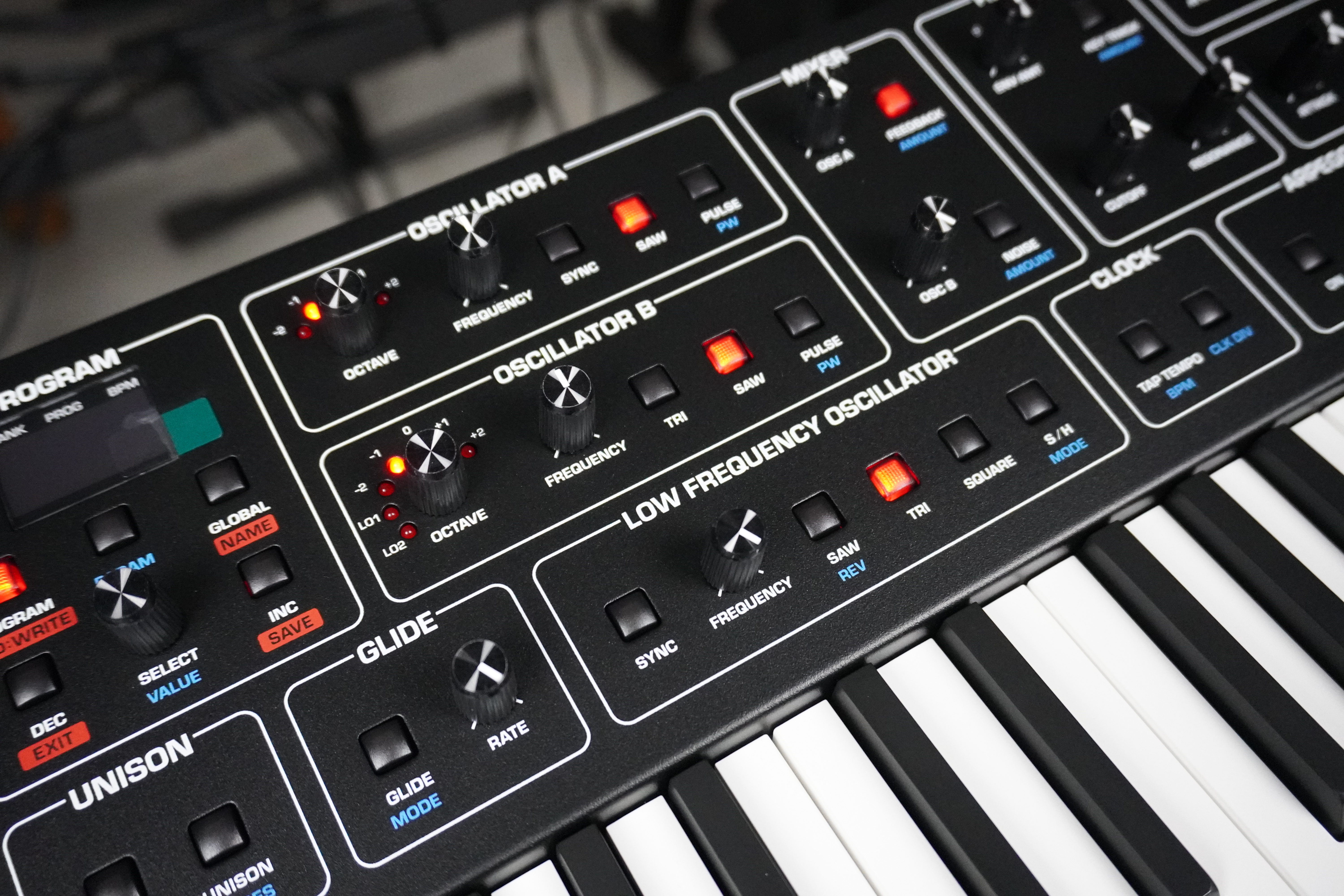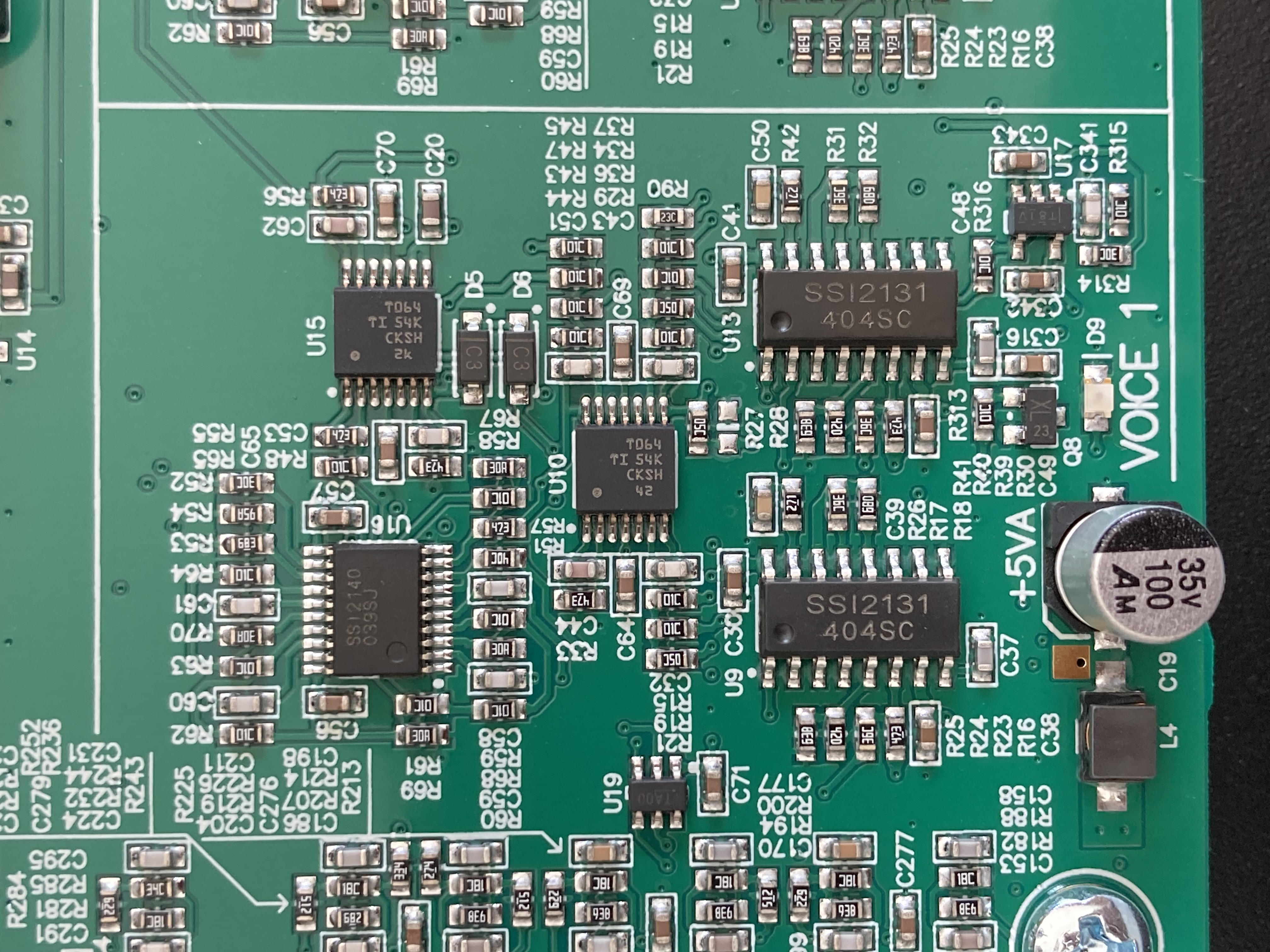Determined to occupy the entry-level of the market, Sequential presents the smallest polyphonic analog synth in its history, the Fourm, offering a typical Prophet-5 sound and a slim polyphonic pressure keyboard.

Originally called Sequential Circuits, the synth maker Sequential was founded 50 years ago by Dave Smith. After filing for bankruptcy in 1987, Smith regained use of the brand in 2015, courtesy of Yamaha, which had bought out the assets. Before his death in 2022, Smith sold the company to the Focusrite group. His last contribution, released after the sale, was Take 5, a compact polyphonic analog synth full of good ideas.
The Fourm, an ultra-compact polyphonic analog synth, promises the sound of a Prophet-5 at a price under $1,000. At that price, Focusrite is targeting the entry-level segment of the hardware synth market. Let’s take a look at the features of this new instrument and see if Sequential has produced a winner.
A very compact three-octave keyboard with slim keys and polyphonic pressure

The synth measures 56 × 25 × 7 cm (22 × 9.8 × 2.8 inches) and weighs 4 kg (8.8 lbs.). Its keyboard consists of 37 slim, elongated mini-keys, coupled with two transposition keys (+/- 2 octaves). In-house designed, it is sensitive to velocity and polyphonic pressure, a first for the brand since the luxurious Prophet-T8 of the '80s. Although the keys and mechanics are molded, the response is pleasant; it doesn’t snap and allows nuanced polyphonic modulations (bend, vibrato, filter, swell…), assignable via a specific modulation matrix, which we’ll talk about later. Excellent news!

The Fourm is almost self-explanatory! A Basic Program function (initialization) is accessible via the Global menu or by key combination (Transpose Down + Program). We couldn’t find the Compare function, which is a shame. We also regret that the display only shows the names of programs and global parameters, but not the value of direct front-panel controls when editing.
Minimalist connectivity is located on the rear panel: a mono audio output, a headphone output, a switch/continuous assignable pedal socket (all in 6.35 (1/4”) jack format), MIDI In, Out and Through DIN jacks, a USB-C socket (MIDI, CC/NRPN, programs, firmware update) and a cheap 12VDC/1.2A external power supply terminal. We’re really in the entry-level range here.
Comfortable program memory totaling 256 rewritable slots and 256 factory presets
.


.

- Fourm_1audio 01 FB Bass00:23
- Fourm_1audio 02 Sync Bass00:53
- Fourm_1audio 03 ATP Brass00:34
- Fourm_1audio 04 ATP FC00:51
- Fourm_1audio 05 EDM Stack00:24
- Fourm_1audio 06 Fear Pad00:28
- Fourm_1audio 07 ATP Pluck00:30
- Fourm_1audio 08 ATP Gratte00:38
- Fourm_1audio 09 Big Rez00:36
- Fourm_1audio 10 Dirty Sync00:28
A fully analog signal with VCO-VCF-VCA

They can also follow one of the 65 internal temperaments (rewritable via Sysex). Oscillator B can synchronize the cycle of oscillator A. There’s also a noise generator (white, pink, and violet). All this is adjustable in the Mixer before attacking the VCF (component SSI2140 used in Take 5).

We appreciate the strong character of the classic (but compensated) filter, but its compensation can’t be deactivated (never happy, on Audiofanzine!). Finally, the final amp can be modulated by a second dedicated envelope (also velocity-controlled), B-oscillator, LFO and pressure. The overall volume can be memorized per program, thank you. Voices can be played in unison (one to four voices), with fine detune or chord memory. A rather subtle (not cartoonish) Vintage parameter simulates inconsistencies in behavior or calibration between voices (VCO, VCF, and VCA, envelopes), just like on a vintage synth. It can be accessed via the menu.
A small Pro-One-style modulation matrix directly accessible from the front panel that facilitates source/destination assignment
.

Regrettably, there is no polyphonic mode for this LFO, but for this, you can fall back on oscillator B via the modulation matrix (see below). The two ADSR envelopes are routed to the VCF and VCA, with the VCF envelope also routed to the modulation section (see below). Their curves are modeled on the Prophet-5 envelopes, allowing for everything from slamming attacks to very long beats. Velocity can modulate the amount of envelope action, thanks to a dedicated key for each, which triggers and doses modulation (positive action only).
Their cycle can be retriggered each time a note is pressed.

Destinations are oscillator A frequency, oscillator B frequency, filter cutoff frequency, amplitude, LFO frequency and LFO quantity. For the LFO, the modulation is monodic (based on the largest captured value), as the synth contains only one LFO, which is a shame, as the LFO is digital! Finally, there’s a small Pro-One-style modulation matrix with three sources (filter envelope, oscillator B and LFO) assignable to eight destinations (oscillator A frequency, oscillator B frequency, oscillator A pulse width, oscillator B pulse width, filter cutoff frequency, amplitude, LFO frequency, and LFO quantity).
Modulation quantities are controlled by a potentiometer (one for each source, with bipolar adjustment) and by the modulation wheel; thus, there are two simultaneous control buses, with each destination controlled via one, the other, or both. Route buttons are used to assign sources to destinations (those you want, without exception). They are equipped with multicolored LEDs to distinguish the control buses used, which is a well-thought-out feature in this tiny space.
A small arpeggiator with sequencer mode memorizable in each program

The sequencer is 4-voice polyphonic and has up to 64 steps. In note mode, recording is by step increments. A step can contain note(s), silence, link or glide. In automation mode, movements of a single parameter to be defined are recorded step by step, somewhat blindly. Settings are saved in programs. Arpeggiated/sequenced notes can be transmitted via MIDI. In short, very basic stuff here, we’d have liked a bit of swing, randomness, and ratchets.







